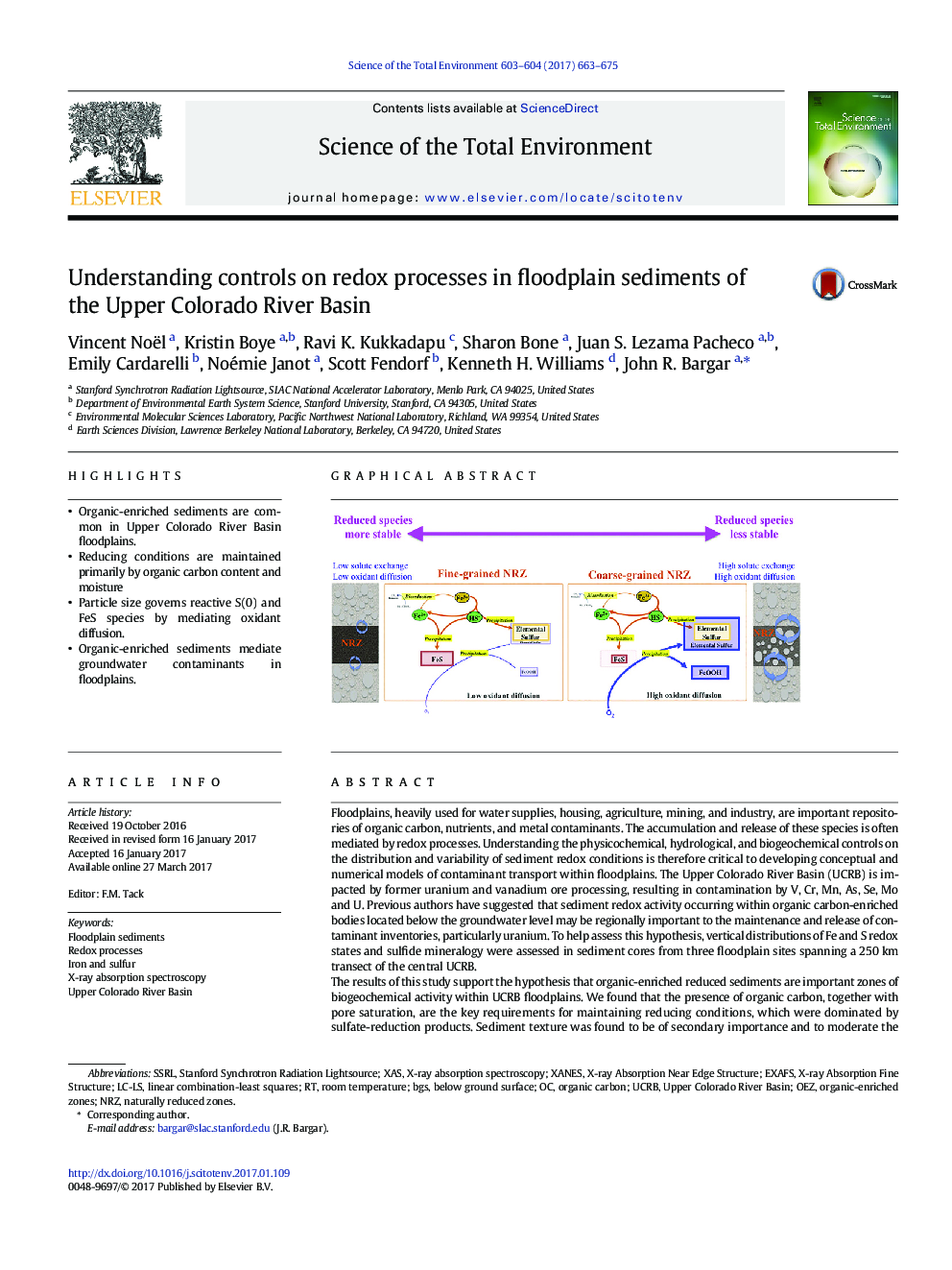| کد مقاله | کد نشریه | سال انتشار | مقاله انگلیسی | نسخه تمام متن |
|---|---|---|---|---|
| 5750336 | 1619696 | 2017 | 13 صفحه PDF | دانلود رایگان |
- Organic-enriched sediments are common in Upper Colorado River Basin floodplains.
- Reducing conditions are maintained primarily by organic carbon content and moisture
- Particle size governs reactive S(0) and FeS species by mediating oxidant diffusion.
- Organic-enriched sediments mediate groundwater contaminants in floodplains.
Floodplains, heavily used for water supplies, housing, agriculture, mining, and industry, are important repositories of organic carbon, nutrients, and metal contaminants. The accumulation and release of these species is often mediated by redox processes. Understanding the physicochemical, hydrological, and biogeochemical controls on the distribution and variability of sediment redox conditions is therefore critical to developing conceptual and numerical models of contaminant transport within floodplains. The Upper Colorado River Basin (UCRB) is impacted by former uranium and vanadium ore processing, resulting in contamination by V, Cr, Mn, As, Se, Mo and U. Previous authors have suggested that sediment redox activity occurring within organic carbon-enriched bodies located below the groundwater level may be regionally important to the maintenance and release of contaminant inventories, particularly uranium. To help assess this hypothesis, vertical distributions of Fe and S redox states and sulfide mineralogy were assessed in sediment cores from three floodplain sites spanning a 250Â km transect of the central UCRB.The results of this study support the hypothesis that organic-enriched reduced sediments are important zones of biogeochemical activity within UCRB floodplains. We found that the presence of organic carbon, together with pore saturation, are the key requirements for maintaining reducing conditions, which were dominated by sulfate-reduction products. Sediment texture was found to be of secondary importance and to moderate the response of the system to external forcing, such as oxidant diffusion. Consequently, fine-grain sediments are relatively resistant to oxidation in comparison to coarser-grained sediments. Exposure to oxidants consumes precipitated sulfides, with a disproportionate loss of mackinawite (FeS) as compared to the more stable pyrite. The accompanying loss of redox buffering capacity creates the potential for release of sequestered radionuclides and metals. Because of their redox reactivity and stores of metals, C, and N, organic-enriched sediments are likely to be important to nutrient and contaminant mobility within UCRB floodplain aquifers.
150
Journal: Science of The Total Environment - Volumes 603â604, 15 December 2017, Pages 663-675
